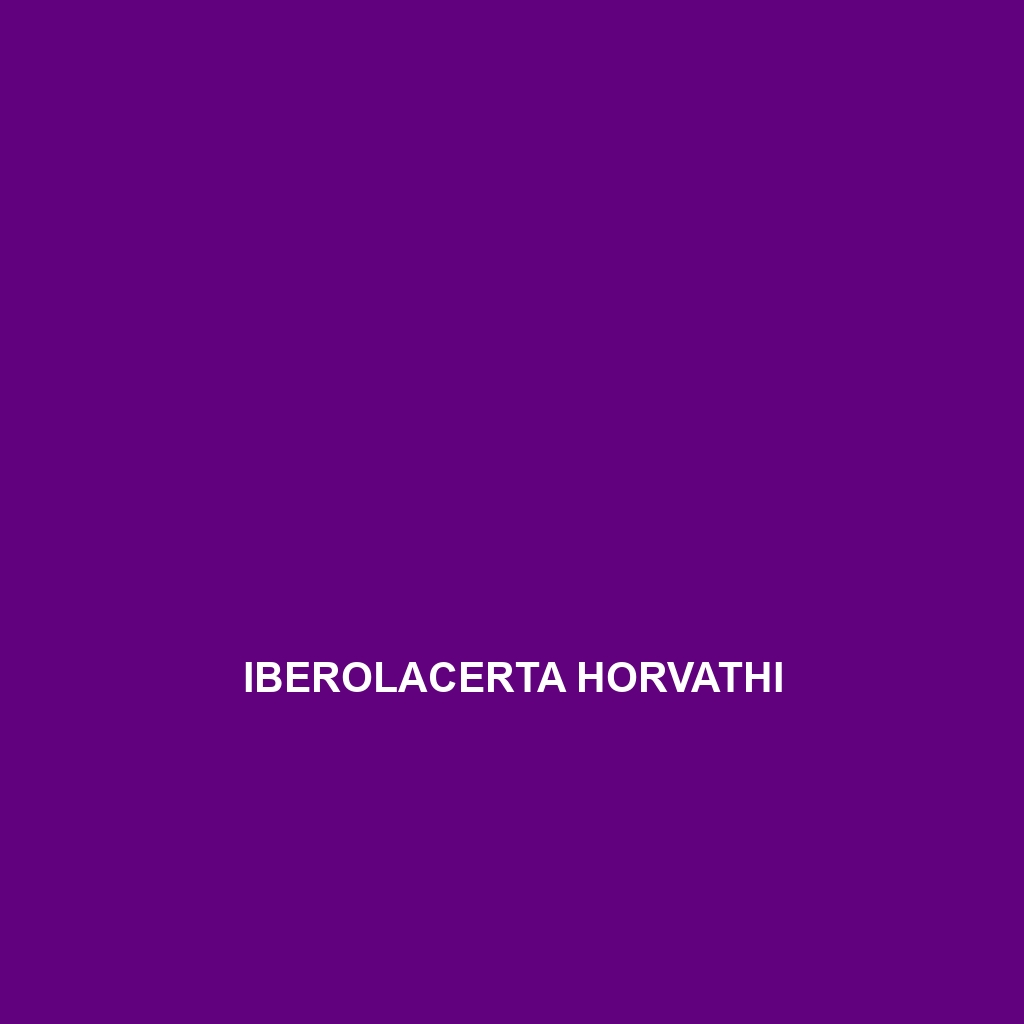Common Name
Iberolacerta horvathi
Scientific Name
Iberolacerta horvathi
Habitat
The Iberolacerta horvathi, commonly known as Horvath’s rock lizard, is primarily found in the mountainous regions of southeastern Europe, particularly in the Dolomites of northern Italy and the Balkans. This lizard thrives in a habitat characterized by rocky terrains, grasslands, and alpine meadows. The climate in these regions varies from temperate, with cold winters and mild summers, to more extreme alpine conditions. The rocky and rugged environment provides essential shelter and basking spots for Iberolacerta horvathi while ensuring their survival in fluctuating temperatures. These habitats are often bordered by forests, which further contribute to the rich biodiversity of the ecosystem.
Physical Characteristics
Iberolacerta horvathi has a notable distinct appearance that makes it easily identifiable. Adults typically range from 18 to 25 centimeters in total length. One of the most striking features of this lizard is its coloration; they exhibit a vibrant, greenish-blue hue on their dorsal side, often with black markings that can vary between individual specimens. Their underbelly is usually lighter, often white to yellowish. Additionally, the limbs are relatively well-developed, allowing for agile movement among rocky terrains. Males are generally larger and tend to have brighter coloration than females, particularly during the mating season, which is essential for attracting partners.
Behavior
The behavior of Iberolacerta horvathi is characterized by a blend of diurnal activity and adept foraging strategies. This species is known for its territorial instincts, especially during mating season when males engage in vigorous displays to ward off rivals and attract females. Their social dynamics reveal fascinating patterns of interaction, often engaging in head-bobbing displays as a form of communication. Notably, this lizard is known to bask in sunlight, which is crucial for thermoregulation. Instances of hiding within crevices during the hottest parts of the day showcase their behavioral adaptation to extreme temperatures. Although primarily diurnal, some populations may exhibit nocturnal behaviors during warmer months.
Diet
Iberolacerta horvathi is classified as an insectivore; its diet primarily consists of various insects and arthropods, including beetles, grasshoppers, and small spiders. The lizard’s agile hunting techniques involve strategic stalking and rapid movements to catch prey. In some instances, they may also consume small fruits and plant material, especially during the summer months when the availability of insects decreases. Observations indicate that they have developed exceptional foraging skills, allowing them to adapt their dietary preferences based on seasonal availability.
Reproduction
The reproductive cycle of Iberolacerta horvathi typically occurs between late spring and early summer. During mating season, males exhibit vibrant colors and engage in a series of courtship rituals, which may include displays of strength and agility. Once mating is successful, females lay clutches of 2 to 10 eggs in warm, moist soil or under rocks to protect them from predators. The gestation period lasts approximately 60 to 70 days, after which the hatchlings emerge and are independent from birth, showcasing an interesting survival strategy. Parental care is non-existent; instead, the young lizards must quickly learn to navigate their rugged environment to evade predators.
Conservation Status
The conservation status of Iberolacerta horvathi is currently categorized as vulnerable by the IUCN Red List. The primary threats to this species include habitat destruction due to urbanization, agricultural expansion, and climate change, which impact their natural rocky habitats. Conservation efforts have begun to mitigate these threats, with initiatives aimed at habitat preservation and public education on the species’ ecological significance. Researchers are also monitoring populations to better understand their environmental needs, ensuring future sustainability.
Interesting Facts
One fascinating aspect of Iberolacerta horvathi is its ability to change color slightly based on environmental conditions, enhancing its camouflage against predators. Additionally, this lizard has been observed demonstrating cooperative behaviors, where individuals often help each other in monitoring the presence of predators, a rare trait among reptiles. The stunning visual display during mating rituals not only serves a functional purpose but also contributes to the species’ ecological appeal.
